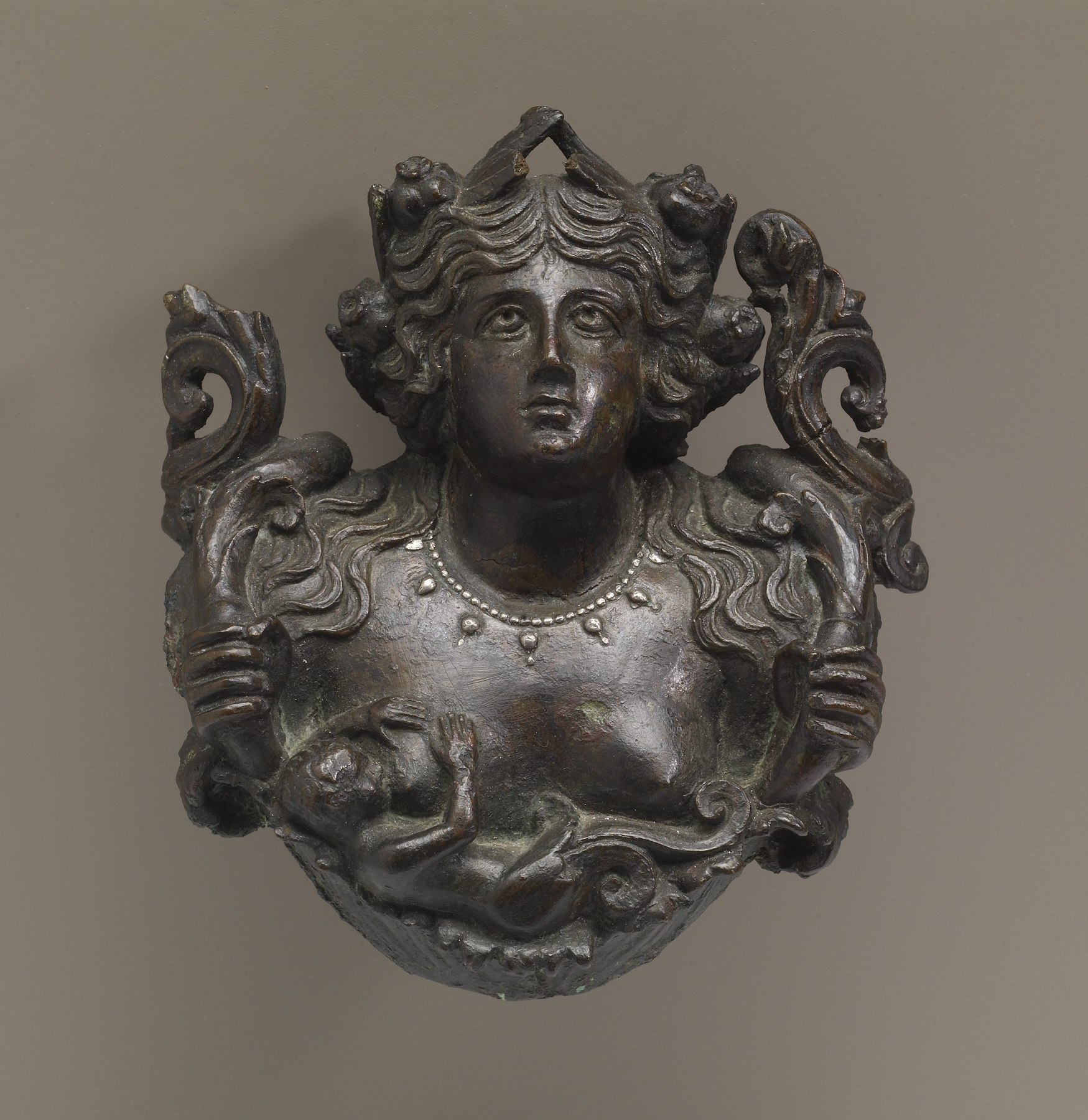Gaia
Many religions were syncretistic, meaning that as they grew and came into contact with other religions, they adopted new beliefs and modified their practices to reflect their changing environment. Both Greek and Roman religious beliefs were deeply influenced by the so-called mystery religions of the East, including the Egyptian cult of Isis, which revealed beliefs and practices to the initiated that remained unexplained, or mysterious, to the uninitiated. Most popular Roman cults had associations with these mystery religions and included the prospect of an afterlife.
The bust of the earth-goddess Gaia, suckling a child at her breast, would have decorated a vessel.
Provenance
Provenance (from the French provenir, 'to come from/forth') is the chronology of the ownership, custody, or location of a historical object. Learn more about provenance at the Walters.
[From Baliana, Egypt]; Dikran Kelekian, New York and Paris; purchased by Henry Walters, Baltimore, 1914; by bequest to Walters Art Museum, 1931.
Exhibitions
| 1983 | Designed for Use: Ancient Industrial Arts. The Walters Art Gallery, Baltimore. |
Conservation
| Date | Description | Narrative |
|---|---|---|
| Examination | Examined | |
| Examination | Examined in preparation for case retro-fit and re-installation. | |
| 6/7/1957 | Treatment | cleaned |
| 1/14/1965 | Treatment | cleaned |
| 6/10/1983 | Treatment | cleaned; coated; other |
| 6/10/1983 | Treatment | cleaned |
Geographies
Egypt (Baliana) (Place of Origin)
Measurements
H: 4 5/16 x W: 3 15/16 x D: 1 3/4 in. (11 x 10 x 4.5 cm)
Credit Line
Acquired by Henry Walters, 1914
Location in Museum
Accession Number
In libraries, galleries, museums, and archives, an accession number is a unique identifier assigned to each object in the collection.
In libraries, galleries, museums, and archives, an accession number is a unique identifier assigned to each object in the collection.
54.874


